Fascinating photos of the UK from over 100 years ago
Britain in black and white

Geopix/Alamy Stock Photo
Photography first came to Britain in 1839, after being invented by French Romantic painter and printmaker Louis-Jacques-Mandé Daguerre. It was during the height of the Victorian era when anything new, modern and cutting-edge - like photography - was embraced with a passion and it was also a period of seismic social change and technical innovation, all captured for posterity by this exciting new medium.
Click or scroll on to see some of the oldest photos ever to be taken of Britain, all of which are over a century old...
1839: First ever photo of London
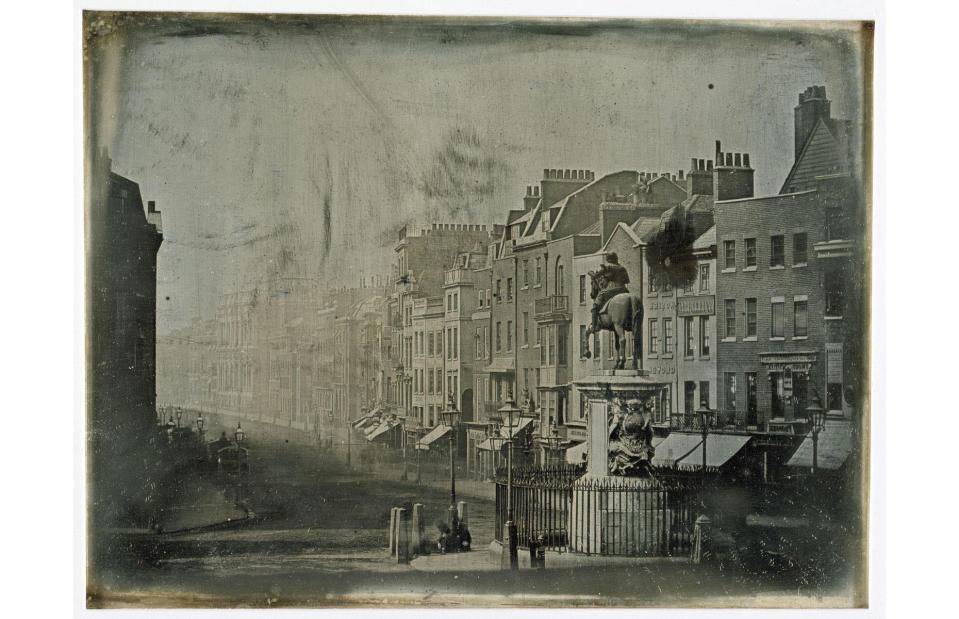
Courtesy of V&A Museum
This is the oldest photograph of London, focusing on the equestrian statue of Charles I near Charing Cross station from which all distances to and from the capital are measured. The photo was taken by Monsieur de St Croix as part of a public demonstration just a few weeks after the French Government revealed the secrets of daguerreotype photography in Paris in August 1839. If you look closely you can see the ghostly forms of people who stayed still long enough to register on the exposure, the first Londoners ever to be photographed.
1842: First ever photo of a royal
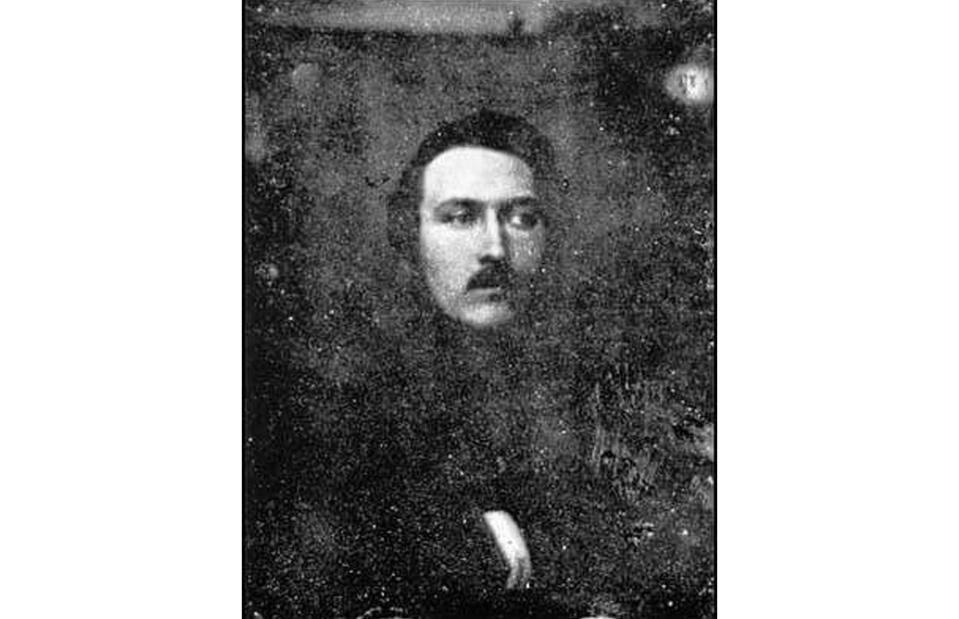
Public Domain via Wikimedia
This daguerreotype of Queen Victoria’s husband Prince Albert dates from 1842 and is the oldest known photograph of a member of the British royal family. The reign of Queen Victoria coincided with developments in science, technology and philosophy but it was the new art of photography that Queen Victoria and her family really embraced.
1844: First ever photo of Queen Victoria
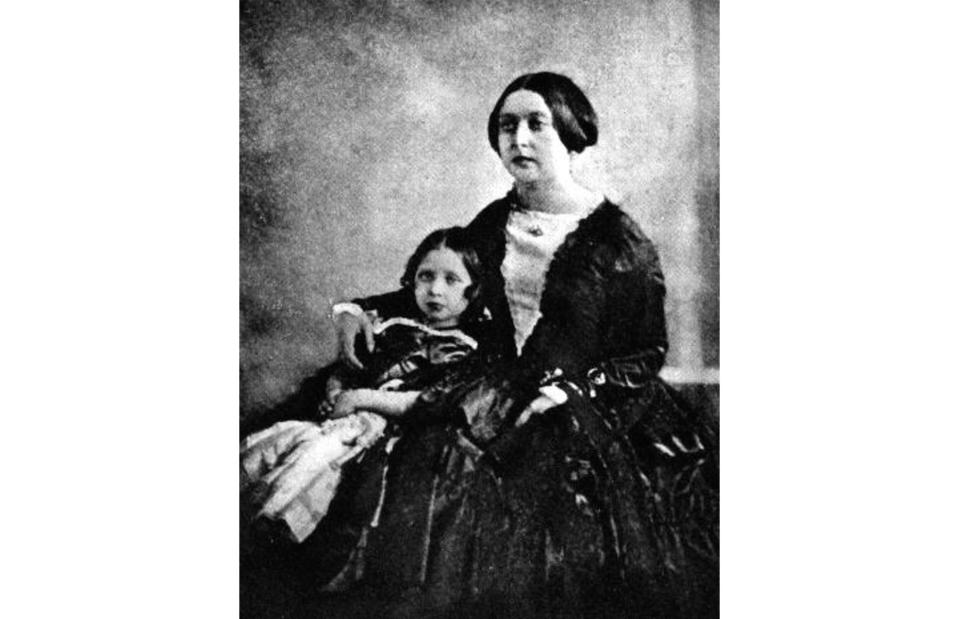
The History Collection/Alamy Stock Photo
With the arrival of the new medium, everything from grand state events to intimate family moments were photographed and widely reproduced, transforming the public perception of the royal family. In many ways it modernised the royal family and how the British public related to them. This photograph of Queen Victoria with her eldest daughter, Victoria, Princess Royal, was taken by the miniature painter Henry Collen in 1844.
1854: The royal couple
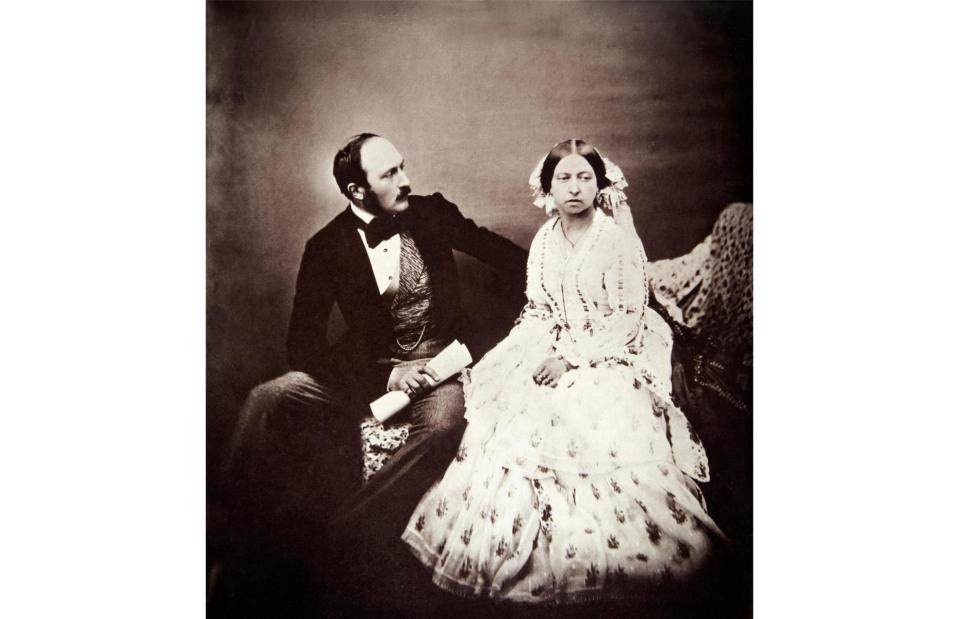
Universal Art Archive/Alamy Stock Photo
This intimate portrait of Queen Victoria and Prince Albert was captured by Roger Felton at Buckingham Palace in 1854. It was widely circulated and helped dispel the notion that the royals were cloistered and tucked away and not at all like the ‘rest of us’.
1855: Crystal Palace rebuilt in Sydenham, England
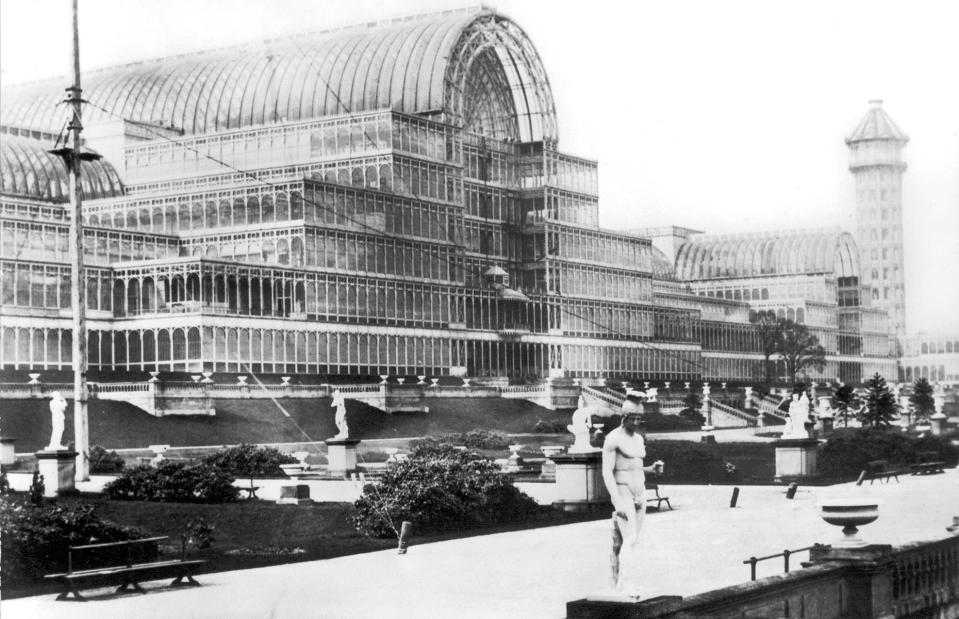
GRANGER - Historical Picture Archive/Alamy Stock Photo
The Great Exhibition of the Works of Industry of All Nations was an international event held in Hyde Park, London in 1851. Also known as the Great Exhibition, it was attended by all the great luminaries of the day including Charles Darwin, Karl Marx and Charles Dickens. An enormous ‘Crystal Palace’ made from iron and glass was built especially to house the event and after the exhibition was over, it was dismantled and re-erected in Sydenham, southeast London. This photo was taken shortly after it was moved.
1857: Brunel, the Godfather of the Industrial Revolution

Heritage Image Partnership Ltd/Alamy Stock Photo
Isambard Kingdom Brunel was a 19th century British civil and mechanical engineer who is widely regarded as one of the greatest figures in the Industrial Revolution. As well as building ingenious dockyards and tunnels and bridges, he also created the first purpose-built transatlantic steamships, revolutionising trade with the Americas. Here we see him standing in front of the launching chains of one such ship, the SS Great Eastern, wearing his trademark top hat and suit and chewing on a cigar.
1860: Summit hotels on Mount Snowdown, Wales
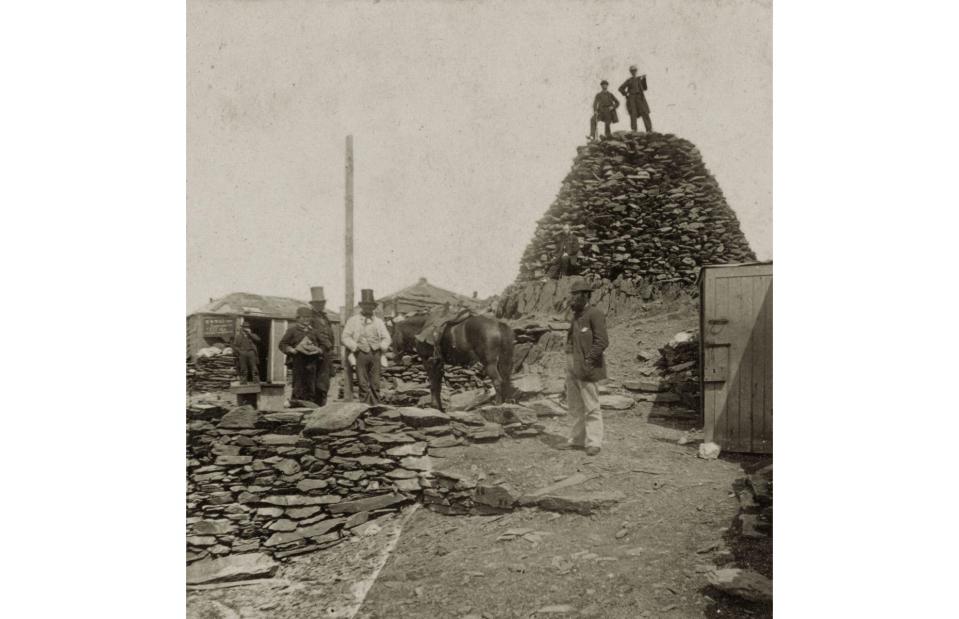
D and S Photography Archives/Alamy Stock Photo
Tourism boomed during Victorian Britain and photographers were on hand to capture the fun and games. This photo taken in 1860 shows the building of a ‘summit hotel’ atop Mount Snowdon in Wales. A number of such huts were built in the late 1800s to serve refreshments and provide shelter to the increasing number of tourists visiting the mountain.
1863: The British Bobby hat is born
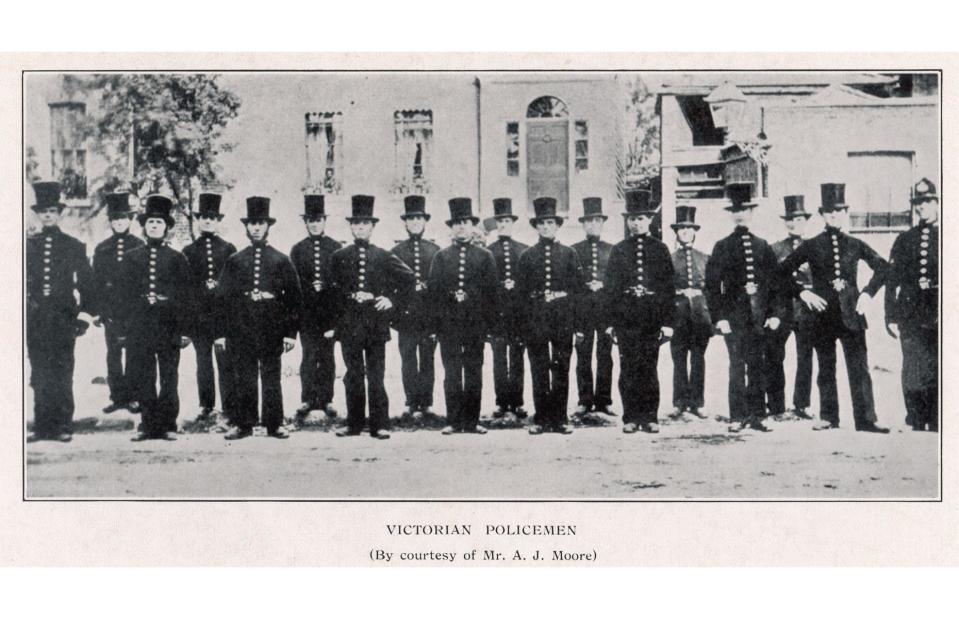
Chronicle/Alamy Stock Photo
This photo of Victorian-era policemen seems ordinary enough. Until you look to the far right and notice that one of the policemen is wearing the kind of ‘British Bobby Hat’ still worn today. It was based on the spiked pickelhaube worn by the Prussian Army and was first adopted by the London Metropolitan Police in 1863. It replaced the ‘stove pipe’ top hats that the other chaps are wearing, adopted back in 1829.
1867: Professional golfers, Scotland
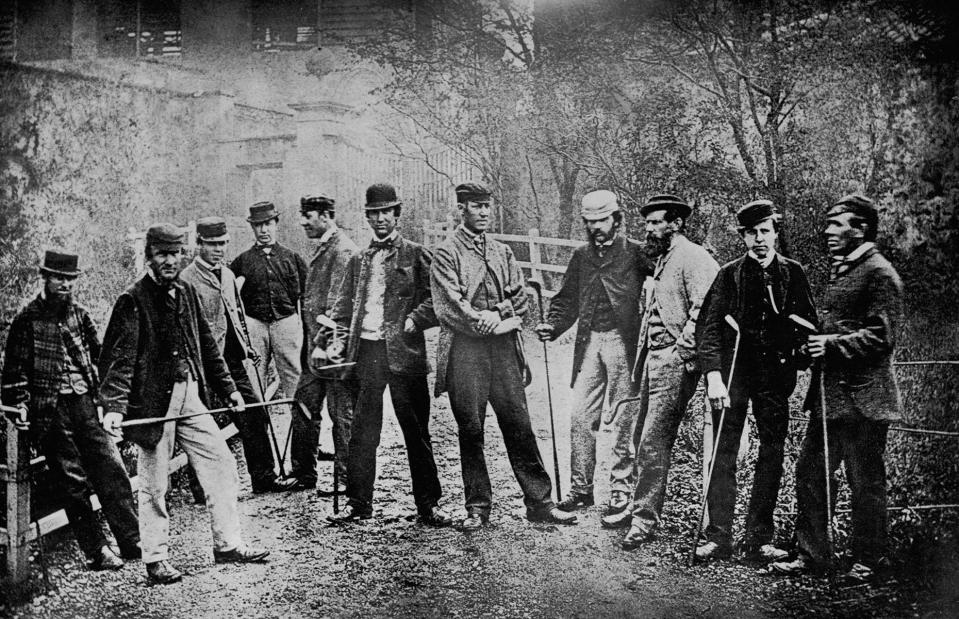
Geopix/Alamy Stock Photo
Sporting events quickly became popular subjects with early photographers. Here we see professional players gathered on the Leith Links course in Edinburgh on 17 May 1867 during the Grand Golf Tournament held there. Golf fashion and equipment changed dramatically in the intervening years.
1870: Butcher at Smithfield Meat Market, London
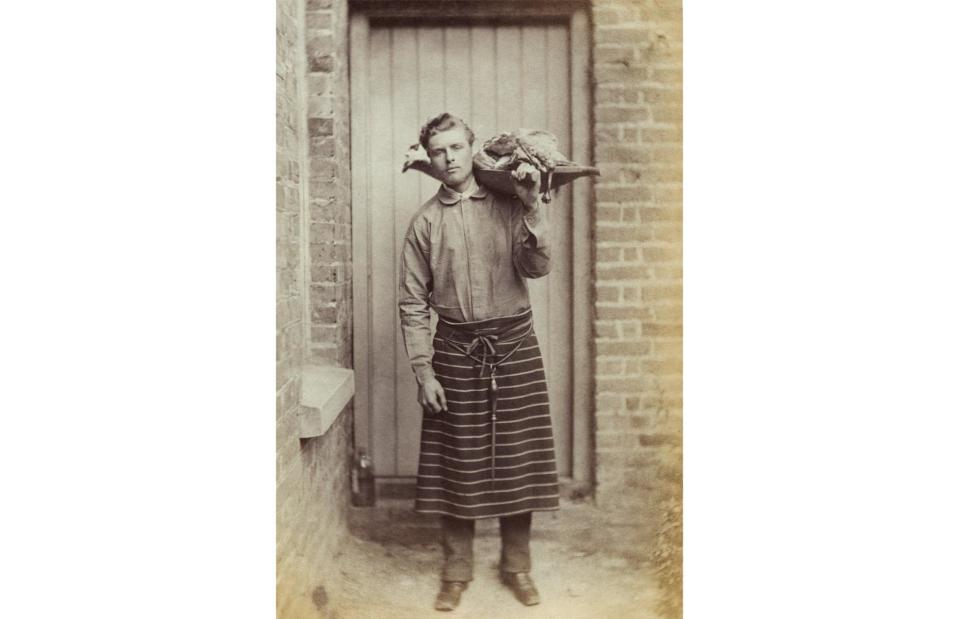
Sean Sexton/Hulton Archive/Getty Images
Hard working tradesmen were perfect subjects for photographers too. Here we see a butcher carrying a tray of meat on his shoulder down at London’s Smithfield Meat Market in around 1870. The historic meat market is earmarked to move to a £1 billion ($1.26bn) high-tech centre in Dagenham, ending over 800 years of trading meat in central London.
1871: Jack The Ripper caught on film?

London Stereoscopic Company/Hulton Archive/Getty Images
A major obsession of Londoners in the late 1800s was Jack the Ripper, an unidentified serial killer active around the impoverished district of Whitechapel in 1888. He preyed predominantly on women and was never caught, leading to feverish speculation about his identity. Michael Ostrog, a Russian criminal and physician, was a suspect, as was Aaron Kosminski, a Polish immigrant. Michael Maybrick, an English composer and singer, photographed here in 1871 was, for a time, a suspect too.
1872: The birth of ‘Photoshopping’
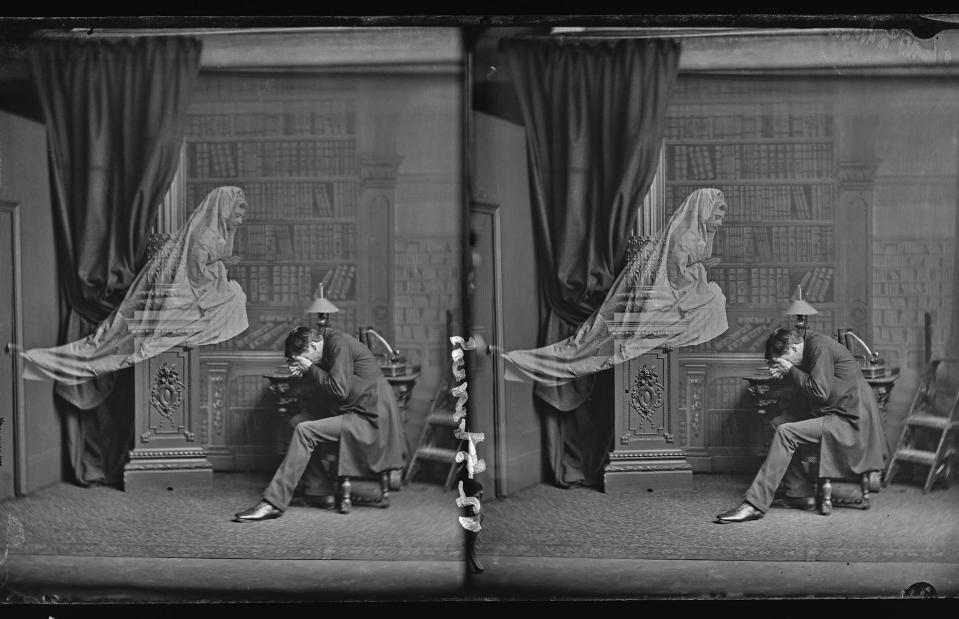
London Stereoscopic Company/Hulton Archive/Getty Images
It didn't take long for photographers to get creative. Here a London photographer uses a stereoscopic double exposure to create the illusion of a man being visited by the ghostly apparition of a woman. Interest in the occult was great in Victorian England. Such photos fuelled it to fever pitch.
1877: Fancy-ware stall, London
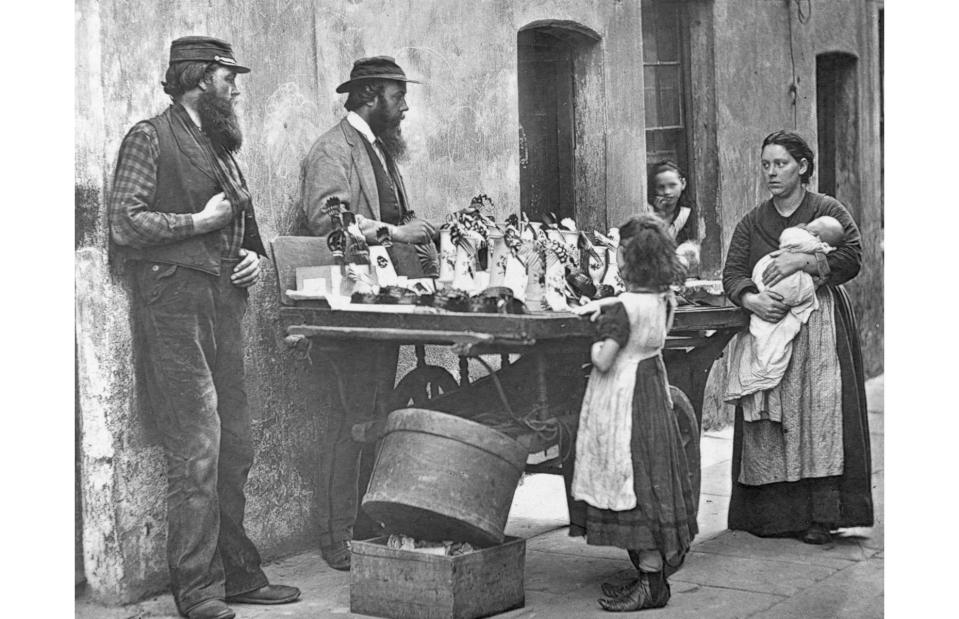
John Thomson/Getty Images
Thanks to the industrialisation of Victorian Britain, some workers could afford the finer things in life. Here we see a fancy-ware dealer selling ornaments from his barrow in London. Fancy-ware was ornate tableware used for ‘dressing’ the dinner table, a practice that gained popularity in the late 1800s. Even in the poorest households, fancy-ware would make an appearance when guests arrived, unexpected or not.
Late 1800s: Wooden footwear in northern Britain
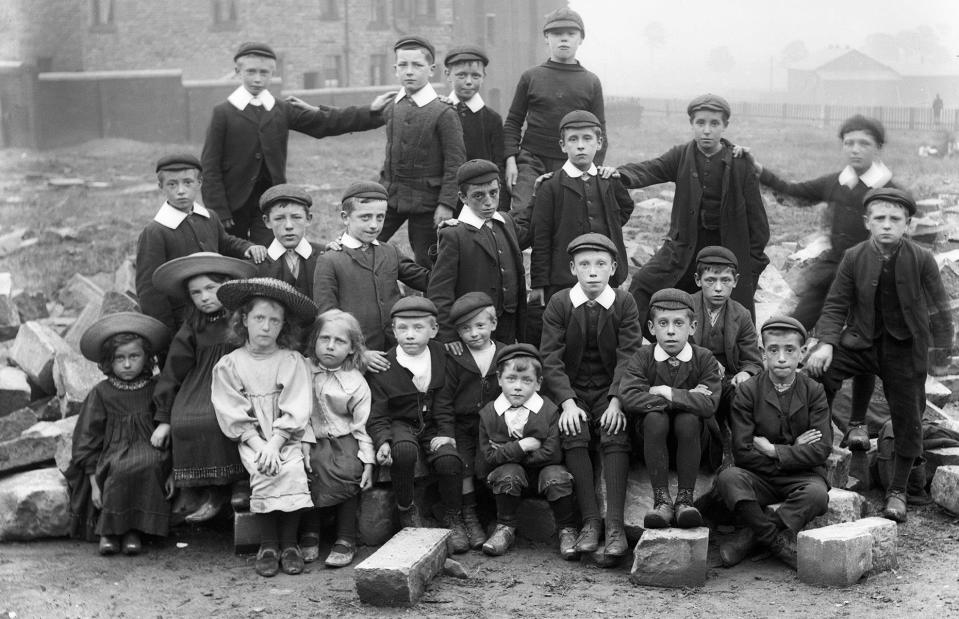
Dave Bagnall Collection/Alamy Stock Photo
Quite often, Victorian photographers turned their cameras on everyday life and everyday people, providing an intriguing ‘snapshot’ of 1800s Britain. Here we see a group of Sunday school children in Lancashire, northern England, towards the end of the century. Most are wearing caps, a tradition that would continue into the 1900s. But also notice the clogs. Wooden shoes like these were common across northern Britain, and not just in the Netherlands, the country they are most closely associated with.
Late 1800s: Herring gutters, Scotland
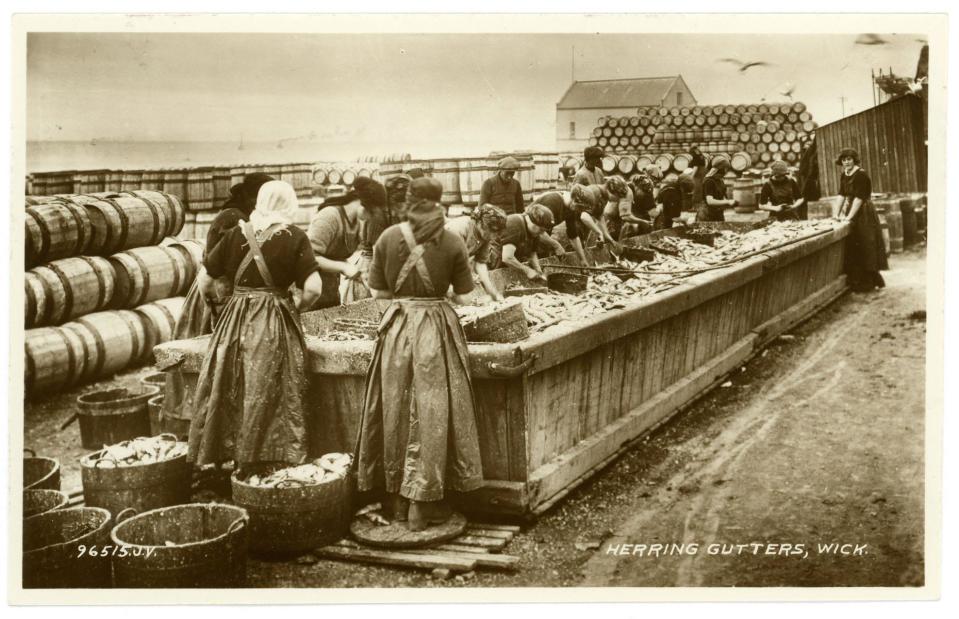
thislife pictures/Alamy Stock Photo
Back in the 1890s in Scotland, men caught the fish and women cleaned them. As we can see from this photo taken in Wick in Caithness, gutting and cleaning the herring hauled in from the North Sea was a communal affair. Waxed aprons gave some protection from the inevitable splatter. A kerchief was used to cover hair. But there was not a single pair of gloves in sight.
1890: Welsh miners
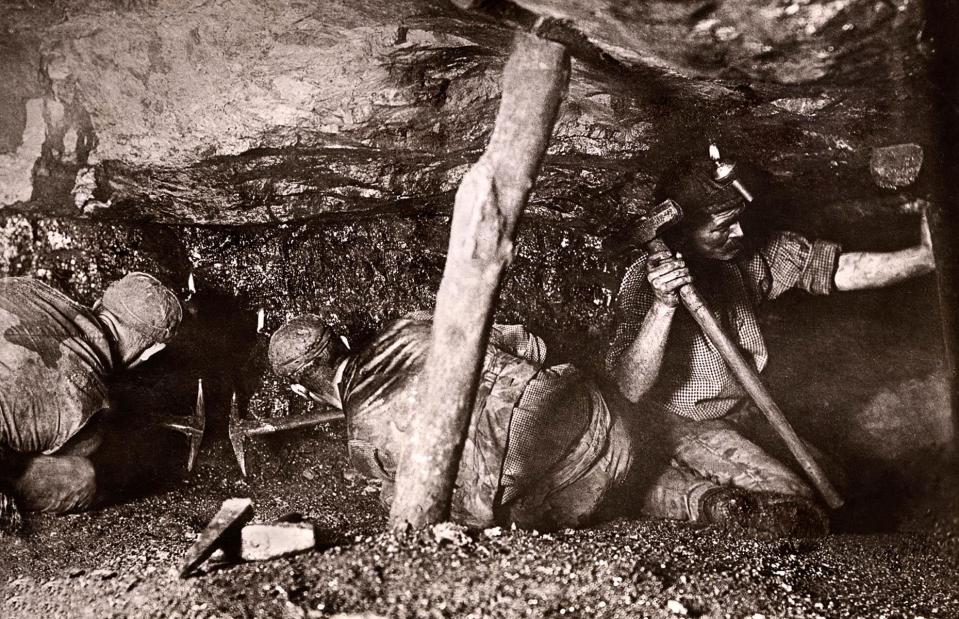
f8 archive/Alamy Stock Photo
In Wales, miners often proved striking subjects. And occasionally, a photographer would accompany workers down into the mine to capture the arduous conditions they endured. Health and safety was obviously not a concern. In this image we see miners using the bare flame of candles to illuminate the shafts, despite the presence of highly combustible methane gas. The photographer’s sulphurous flash would have been a fire hazard too.
1890: Road to Snowdonia in colour
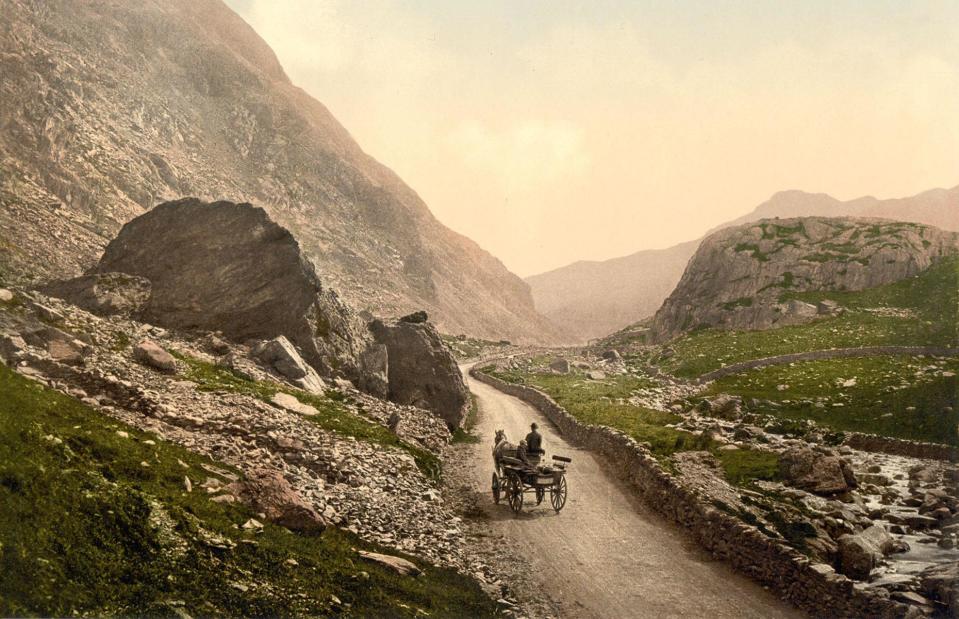
D and S Photography Archives/Alamy Stock Photo
While scientists laboured over creating colour film, photographers began taking matters into their own hands, quite literally, by hand-colouring their own images, following the advice given in A Guide to Painting Photographic Portraits published in 1851. This photo of the Llanberis Pass in Snowdonia, Wales was taken in 1890 and is an excellent example of the art.
1890: Welsh fisherman in Llangollen
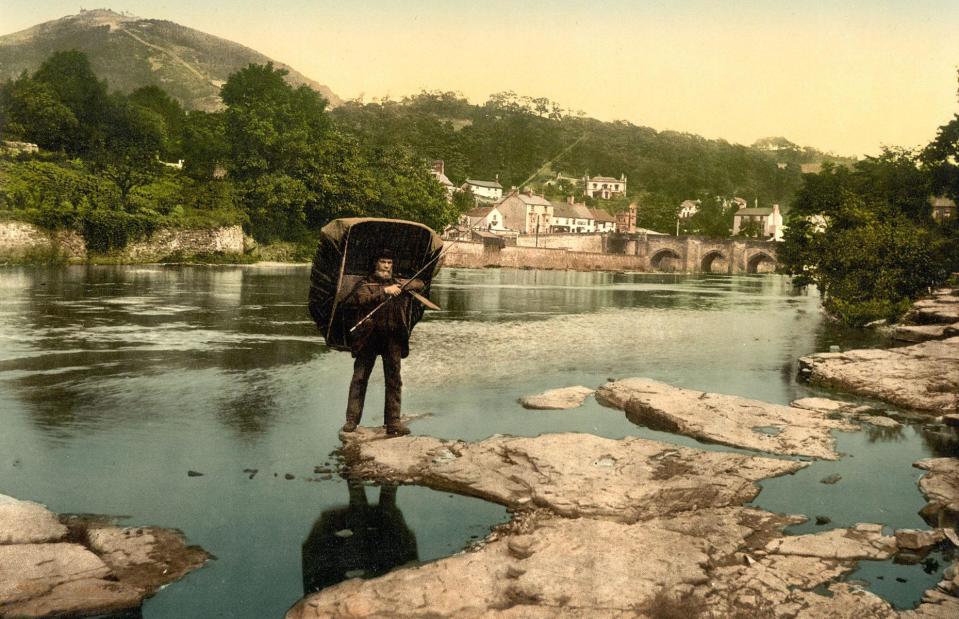
D and S Photography Archives/Alamy Stock Photo
The effect was often painterly, with the photos losing some of their crispness but gaining a dream-like quality. This vintage hand-coloured photochrome image of a fisherman carrying a coracle boat on his back was snapped on the River Dee at Llangollen in North Wales. The background features Llangollen Bridge, while the Dinas Bran castle up on the hill is almost mystical.
1890: Family time in the countryside
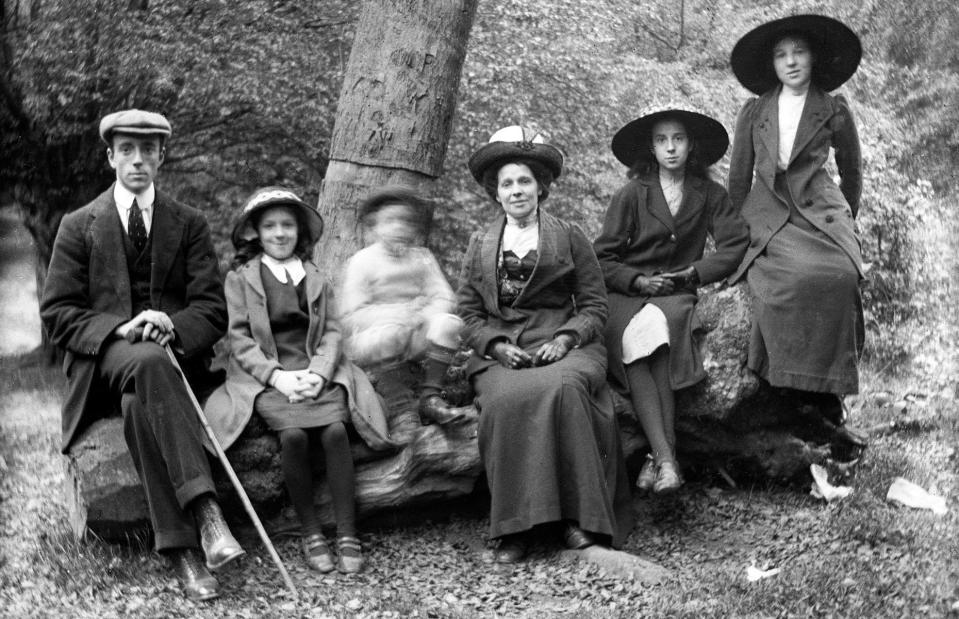
Dave Bagnall Collection/Alamy Stock Photo
Shorter working hours, more public holidays and the growth of the railways gave Victorians the opportunity to take part in a wide variety of outdoor leisure activities. The health benefits were extolled too, with the great outdoors offering respite from the smoggy industrialised cities. This photo of a Victorian family taking a break on a country walk indicates that the concept of specialised clothes for hiking was still some time away.
1890: Ladies Bathing Beach, Margate
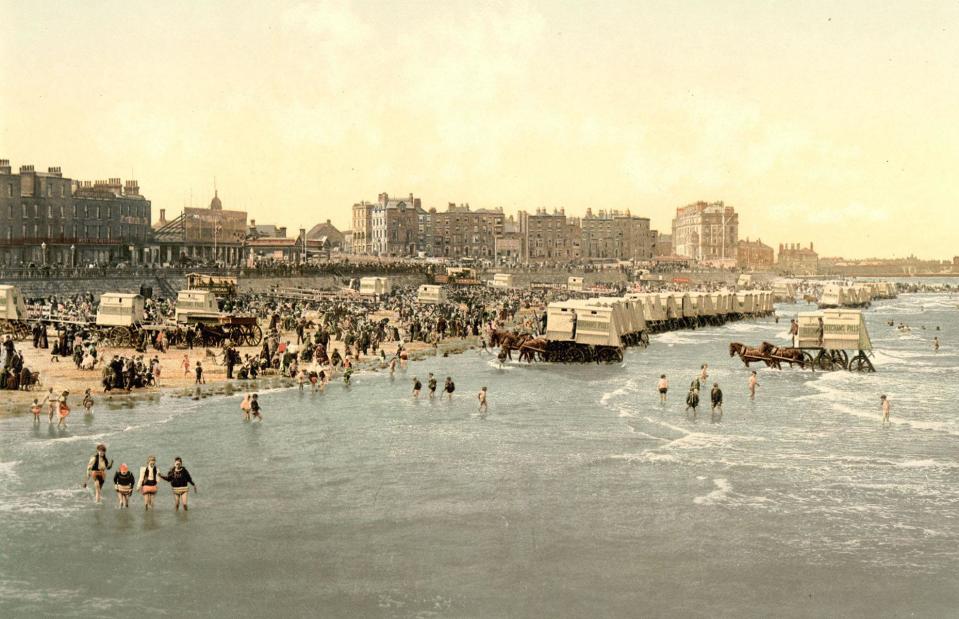
Credit: CBW/Alamy Stock Photo
It was the seaside, however, that most completely captured the hearts of Victorian Brits. Doctors at the time would prescribe “sea air” as a cure for major diseases like tuberculosis. But the reality was that Victorians really did like to be beside the seaside. Here we see a coloured photo of the Margate ladies’ bathing beach in 1890. Note the ‘bathing machines’ being pulled out into the water by horses. These allowed Victorian ladies to bathe ‘respectably’.
1890: Woman emerging from bathing cart
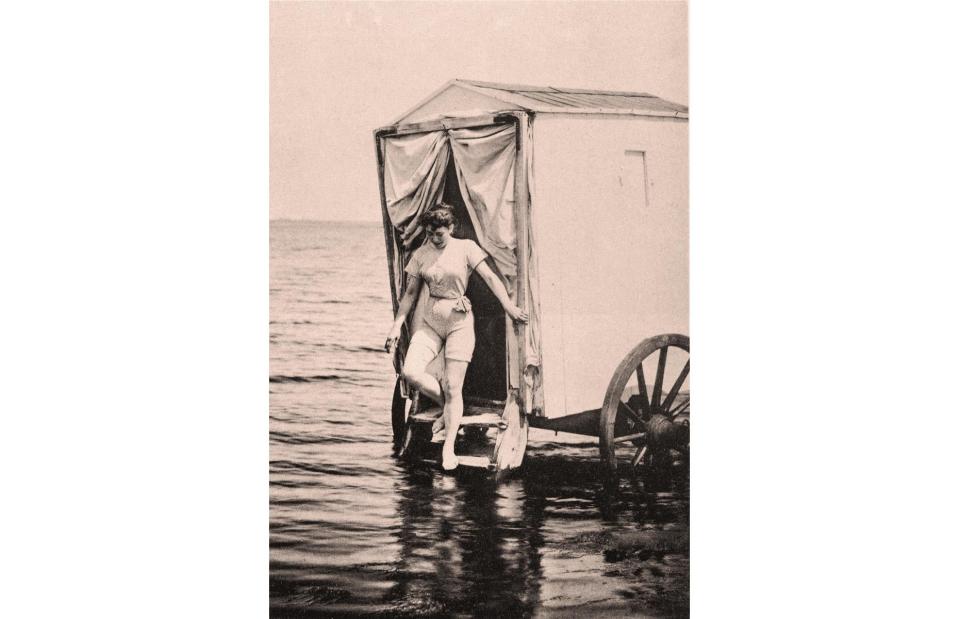
Hi-Story/Alamy Stock Photo
Bathing machines, or bathing carts as they were commonly known, were invented by Benjamin Beale in 1753. They really came into their own almost 150 years later during Victorian times, however, when decorum was of the utmost importance. Basically a wooden hut on wheels, they provided privacy for ladies to change into their swimsuits. Some had canopies so the bather could enter the water unseen. When a lady had finished swimming she would simply re-enter the cart to get changed and raise a little red flag, indicating she was ready to go back to shore.
1890: Seaside entertainment comes to Britain
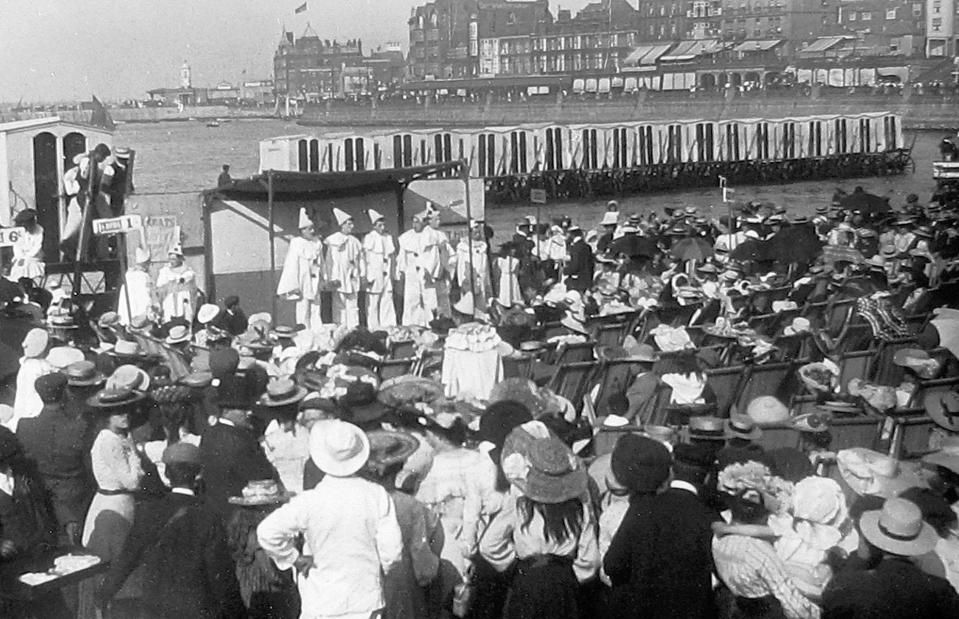
KGPA Ltd/Alamy Stock Photo
When Brits visited the seaside during the Victorian era they also expected to be entertained. There was the usual array of street performers like jugglers, barrel organists, tumblers and Punch and Judy shows, of course. But the real stars of the sands (and pebbles) were the Pierrots. Based on French pantomime, the Peirrots were clown-like figures with sad white-painted faces, loose white costumes and pointed hats. Emerging in the 1890s, their act would form the basis of seaside entertainment in Britain for the next 50 years.
1895: Goat-powered seaside amusement
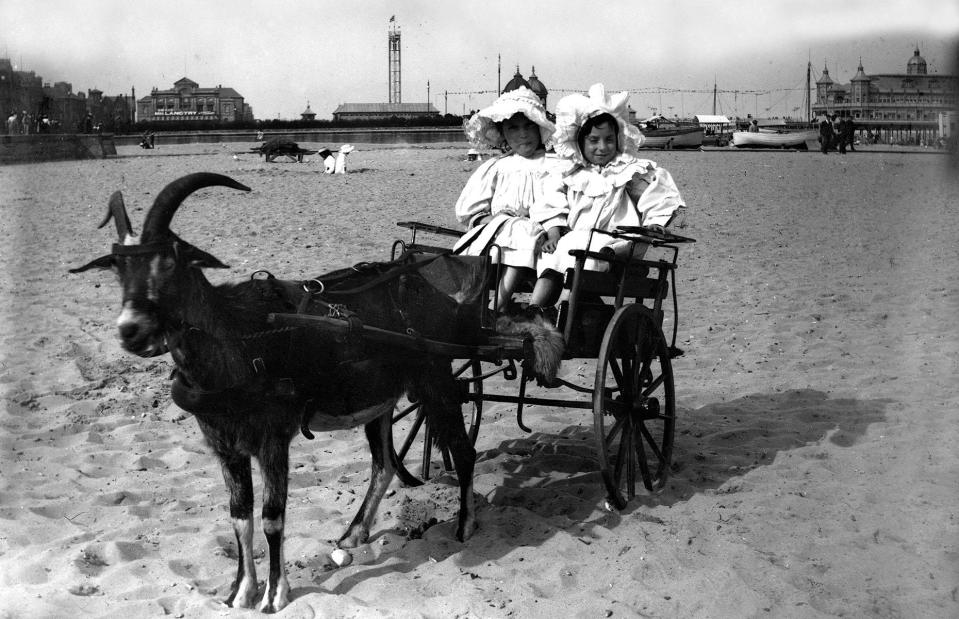
Dave Bagnall Collection/Alamy Stock Photo
The seaside also afforded more simple pleasures. Donkey rides on the beach became a holiday staple for children in Victorian Britain and they continue to delight British youngsters to this day. Being pulled along in a cart by a goat was popular too, as seen by the delighted looks on these girls’ faces in Great Yarmouth in 1895.
1890: Innovation at home
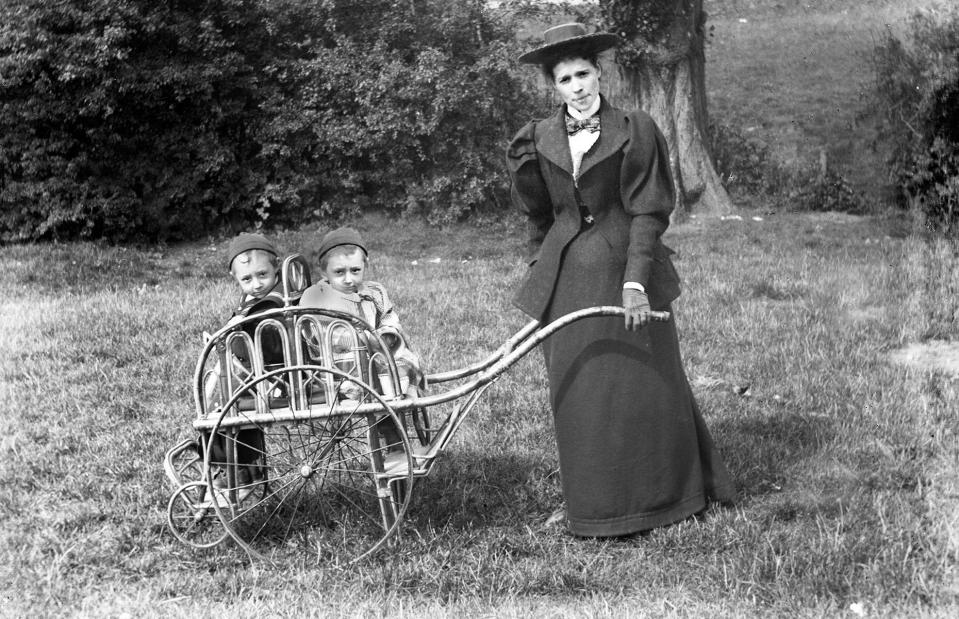
Dave Bagnall Collection/Alamy Stock Photo
Victorians were equally proud to be photographed at home with their families and their prized possessions. The unbridled innovation of this period could be seen everywhere, including in this ingenious pushchair, designed to carry twins in style and comfort. This is likely to have been but a fleeting moment with their mother for these children. Wealthy families children spent most of their time with a nanny.
1896: The Russian Tsar visits Balmoral
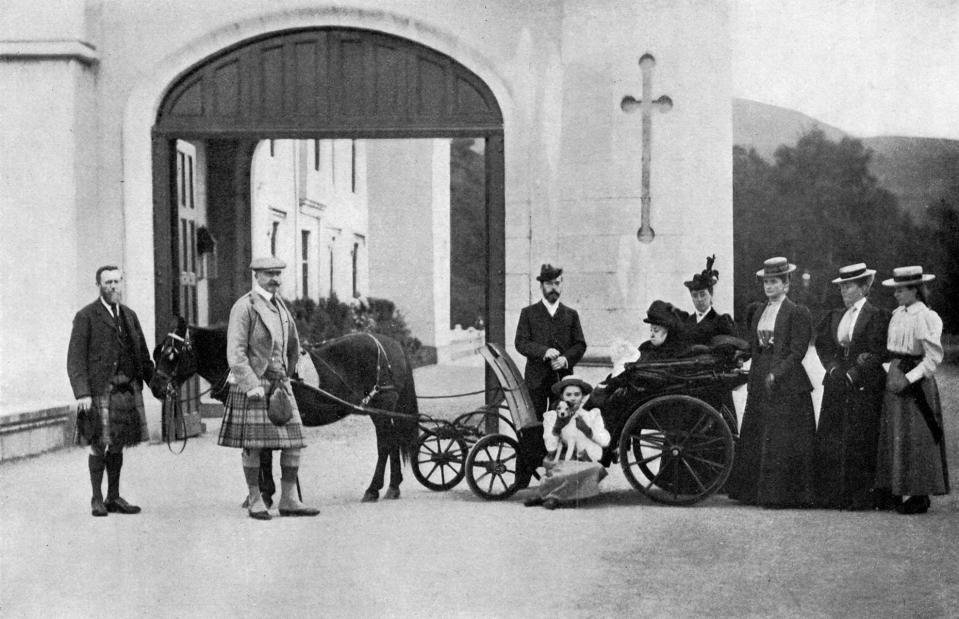
The Print Collector/Alamy Stock Photo
European royalty in the late 1800s were all closely related, as inter-marriage between the various royal houses was quite common. Queen Victoria’s granddaughter Alexandra, for example, was married to Nicholas II, the Tsar of Russia. The royal couple are seen here visiting Queen Victoria at her castle in Balmoral in 1896. Just over 20 years later, the Tsar would be swept from power by the Bolsheviks, with he and his family, including Alexandra, meeting a particularly grisly end.
1897: Queen Victoria’s Diamond Jubilee
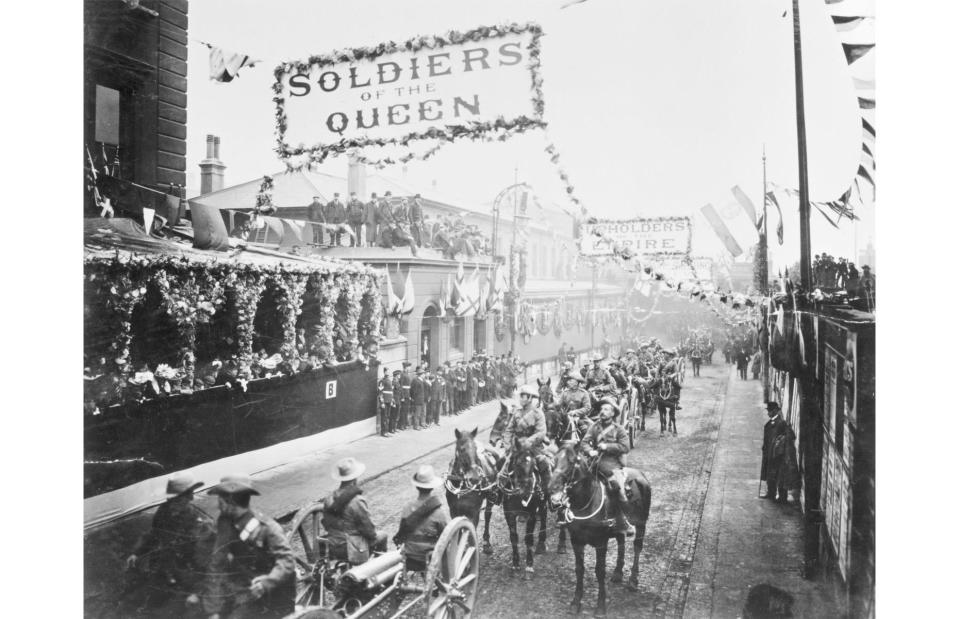
Heritage Image Partnership Ltd/Alamy Stock Photo
The year of 1897 was one of great celebration in Britain as it marked 60 years since Queen Victoria ascended to the throne. It was the first Diamond Jubilee celebrated in Britain – no other monarch has sat on the throne for so long. Here we see a military procession in her honour. As the Queen herself wrote: "No one ever, I believe, has met with such an ovation as was given to me, passing through those six miles of streets... The cheering was quite deafening and every face seemed to be filled with real joy.”
1898: Steam engine workers
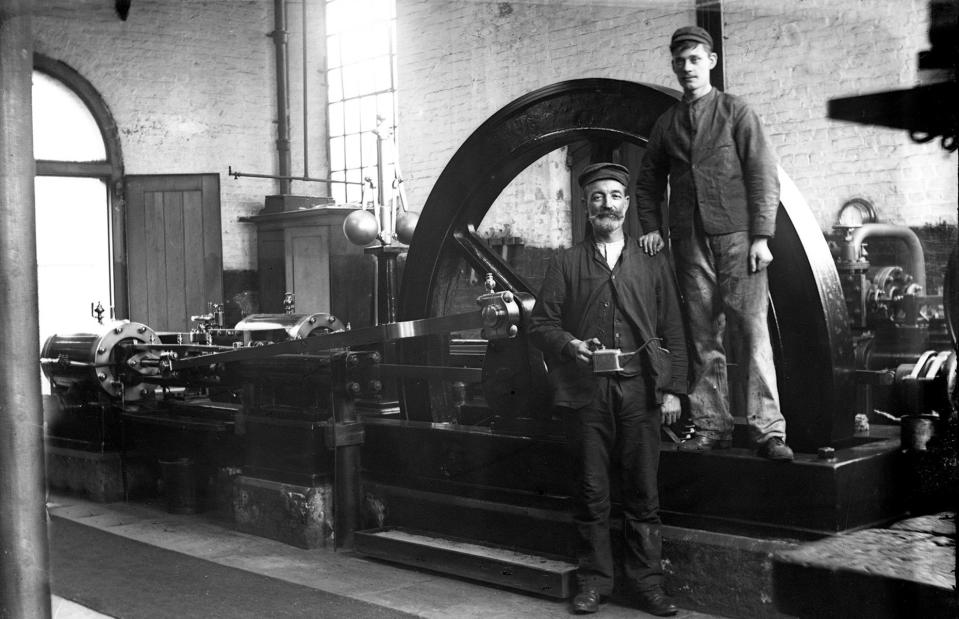
Dave Bagnall Collection/Alamy Stock Photo
The steam engine transformed Victorian Britain and not just with regards to transportation. Industry was revolutionised as well, with steam engines turning the wheels of mechanised factory production and freeing manufacturers from the need to locate their factories on or near sources of water. With that came a new breed of mechanics and engineers, like the ones pictured here in 1898, skilled in repairing and coaxing these often temperamental behemoths.
Late 1800s: Am-Dram splendour
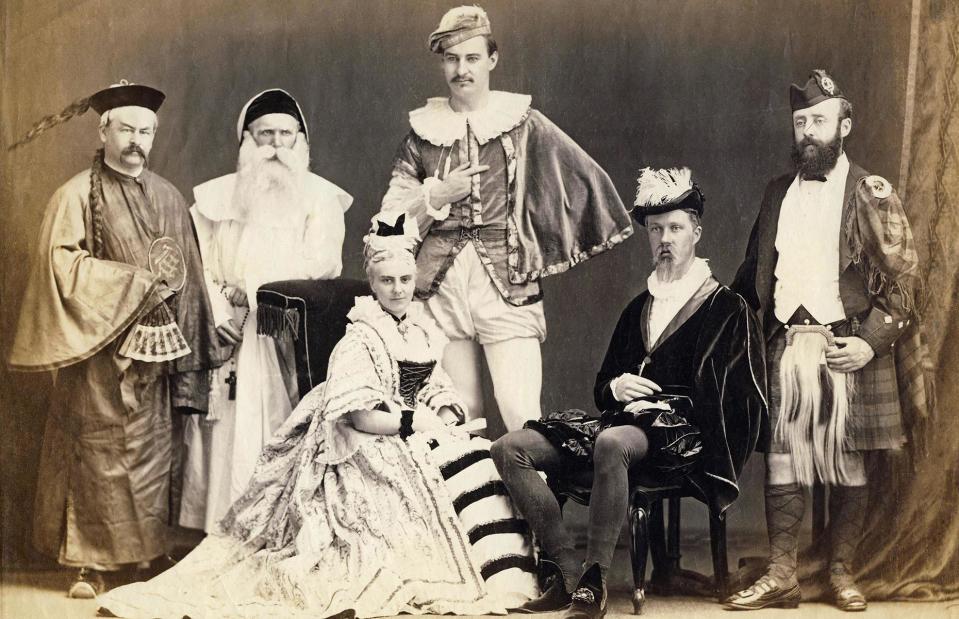
Andrew Dally Collection/Alamy Stock Photo
Throughout the late 1800s, Victorian photographers continued to capture Brits at work, home and play. Like this amateur dramatic group in Manchester, northwest England, about to take the stage in around 1870. The English, it seems, have always had a penchant for fancy dress.
1898: 1st Automobile Club of Great Britain Easter Tour
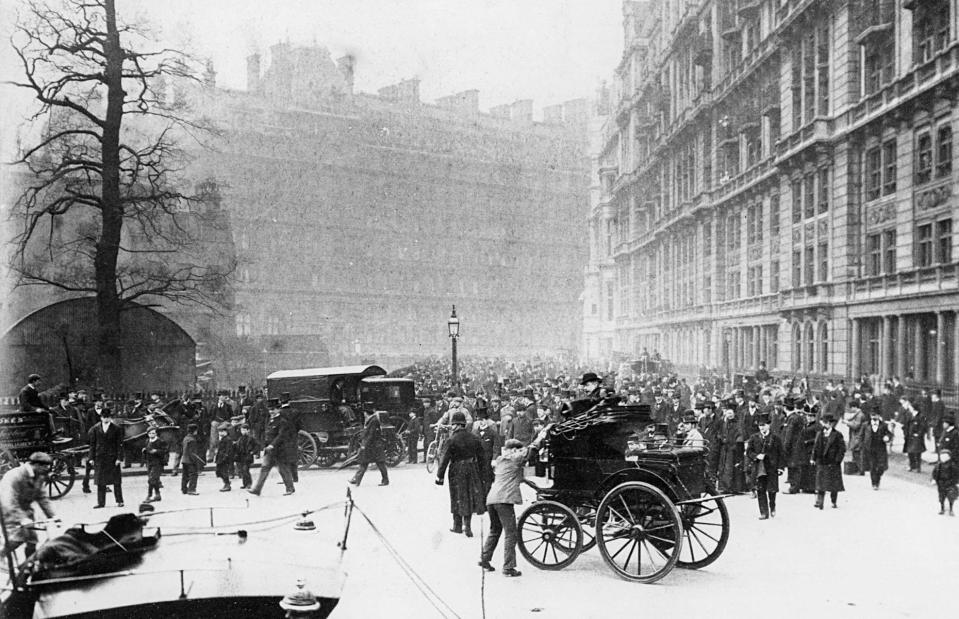
Motoring Picture Library/Alamy Stock Photo
The English also have a fondness for motor racing. The first British-built car was cobbled together by Fredrick William Bremer, a plumber and gas fitter, in 1894. Less than four years later, the 1st Automobile Club of Great Britain Easter Tour began on 7 April 1898. Here we see competitors in their contraptions ready to set off from the starting line in London.
1901: Queen Victoria's State Funeral
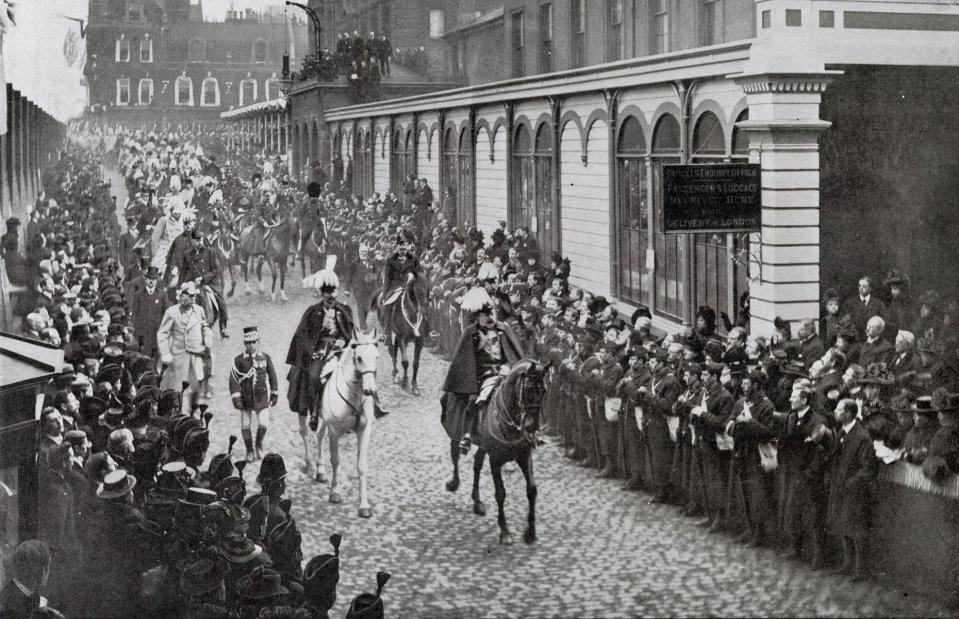
Chronicle/Alamy Stock Photo
Finally, on 22 January 1901, the unthinkable happened. Queen Victoria died and the whole empire mourned. Her state funeral on 2 February 1901 saw one of the largest gatherings of European royalty ever, while hundreds of thousands of her loyal subjects came out in their droves to pay their respects too. Here we see the royal cavalcade passing by Paddington Station in London. The Victorian Age, which had witnessed and nurtured the birth of photography, had finally ended.


